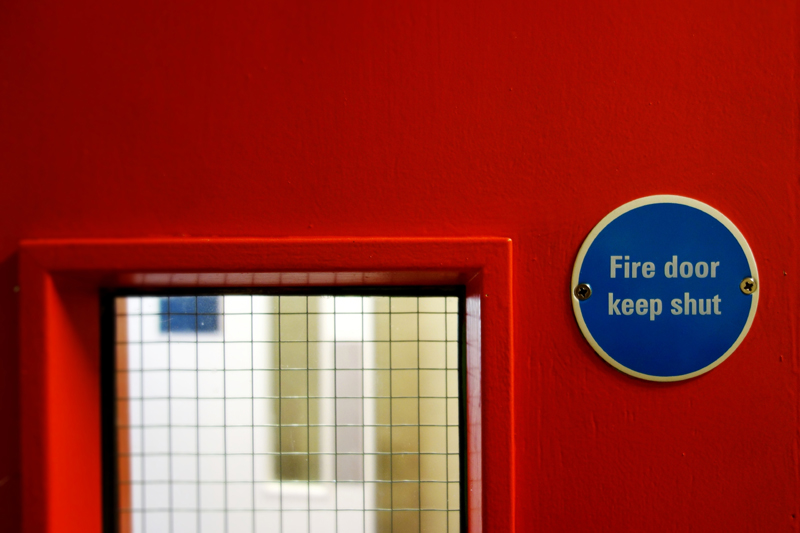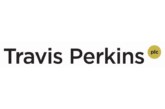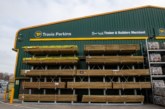
Coinciding with year’s recent Fire Door Safety Week, new research from JELD-WEN highlights the challenges in ensuring compliance throughout the fire door supply chain, as the housing sector continues to adapt to new legislation.
The survey collated responses from professionals across the housing sector – landlords and property managers, public sector contractors, procurement managers and specifiers – to investigate the current issues and gaps in understanding surrounding fire safety compliance.
It found that, in the wake of more stringent regulations, housing professionals were in strong agreement that fire safety compliance is important. This was most prominent amongst procurement professionals, 78% of whom stated that it is ‘Very Important’. However, there remains a lack of understanding throughout the industry of where responsibility for fire safety compliance lies within the supply chain.
The survey found that:
Over half (60%) of specifiers and 58% of procurement professionals would feel ‘Very Responsible’ if a fire were to occur at a building they had worked at and a fire door didn’t offer its intended level of protection – but this drops to 43% of landlords and property managers, and only 34% of contractors.
When asked to rate their confidence in understanding their professional responsibility regarding fire safety compliance, on average only 37% of respondents stated that they were ‘Very Confident’.
Confidence was highest amongst specifiers (48% Very Confident) and procurement professionals (44% Very Confident), compared to landlords and property managers (36%) and contractors (26%).
Commenting on the findings, Marcus Payne, R&D Team Leader at JELD-WEN, said: “With the continued roll-out of new fire safety regulations, we understand why those involved in the fire door supply chain could be unsure of their individual responsibilities – particularly when the guidance can be complex, confusing and evolving.
“It is positive to see that key decision makers are confident in their knowledge when it comes to compliance, however this will fall short if professionals further down the supply chain don’t have the same level of understanding to ensure fire doors continue to offer the required level of protection for residents.”
Marcus continued: “From the point of manufacture to procurement, installation, tenant liaison and aftercare, we must maintain a shared responsibility approach throughout the supply chain in order to achieve a standard of compliance that guarantees every fire door continues to perform and protect as intended.”
Following the Grenfell Tower tragedy, there has been an influx of new statutory guidelines in the last 18 months relating to fire safety as part of the Home Office’s fire safety reform programme. This includes the Fire Safety Act 2021, which was introduced in May 2022; the Fire Safety (England) Regulations 2022, outlining the requirement for regular, legally-mandated checks on millions of fire doors from January 2023; and the Building Safety Act (2022), which will include additional guidance to require further recording and sharing of a building’s fire safety information from 1 October 2023.
As legislation continues to evolve, JELD-WEN’s research also highlighted a demand for supplementary guidance, finding that:
Across all respondents, more than half (64%) think that there should be more guidance made available. This is highest amongst specifiers, with more than three quarters (78%) calling for additional information.
Greater clarity is also needed, with a third of contractors, landlords and property managers feeling that current guidance is not easy to understand.
With a raft of new statutory guidance being introduced, housing professionals are needing to regularly review fire door regulation to keep abreast of the latest developments, with more than half (57%) of respondents now doing this on at least a monthly basis. This rises to 62% of specifiers and 59% of landlords.
Of those surveyed, more than a third (35%) said that the biggest challenge to ensuring good fire safety compliance is a ‘lack of clarity or understanding around whose responsibility fire safety is in the supply chain’, and almost a quarter (23%) said it was ‘confusing guidance on fire safety legislation’.
When procuring a fire door, Safety Accreditation (65%) and Specification (56%) were named as the most important factors – rated by respondents across all sectors above Cost (43%) and Timescales/Availability (32%).
Marcus added: “We must urgently address the gaps in understanding around fire door regulation to ensure that the process following manufacture is fully compliant. It’s reassuring to see that housing sector professionals acknowledge the importance of safety accreditation and specification when procuring a fire door, but it’s equally vital to increase industry understanding and confidence across the supply chain to ensure good and effective fire safety.
“Stakeholders throughout the project lifecycle must work together to deliver better and safer outcomes, equipping themselves with the knowledge and expertise they need to not only meet current compliance, but exceed it..”
JELD-WEN has recently launched a new Continuing Professional Development (CPD) resource to support the industry’s understanding of doorsets and how to improve fire safety standards. ‘Five things to look for in fire doorsets to improve long term fire safety’ is designed to equip housing sector professionals with further knowledge, outlining key areas of importance when procuring and using fire doorsets.









